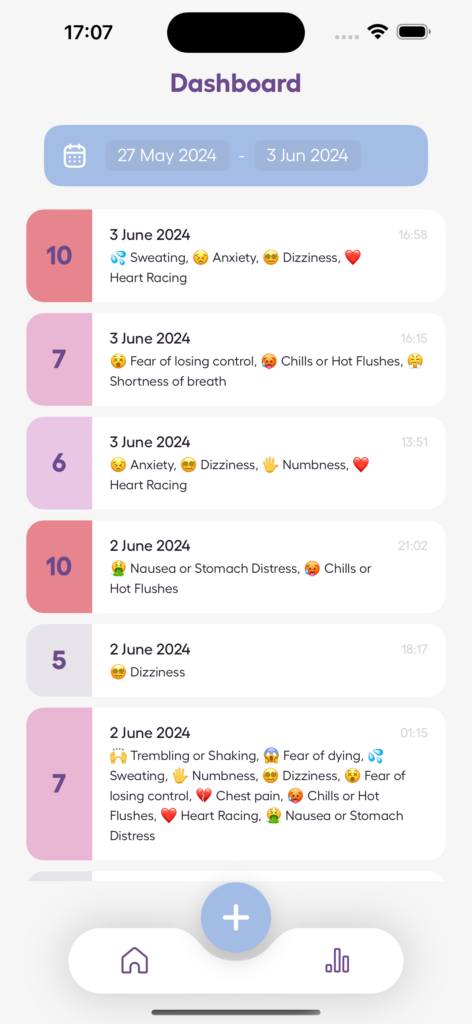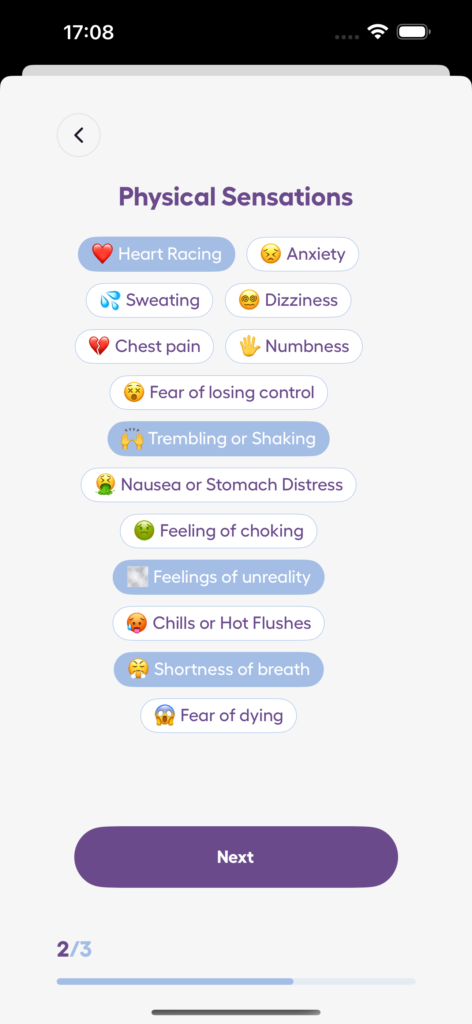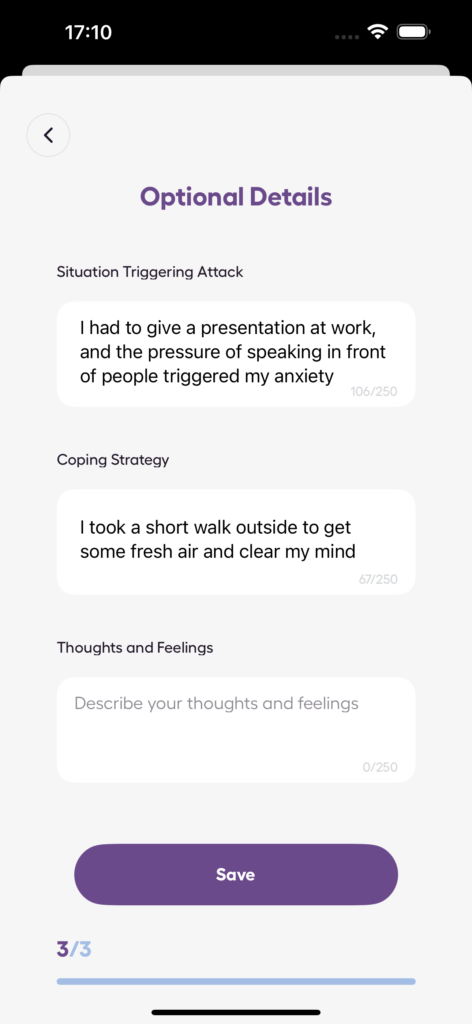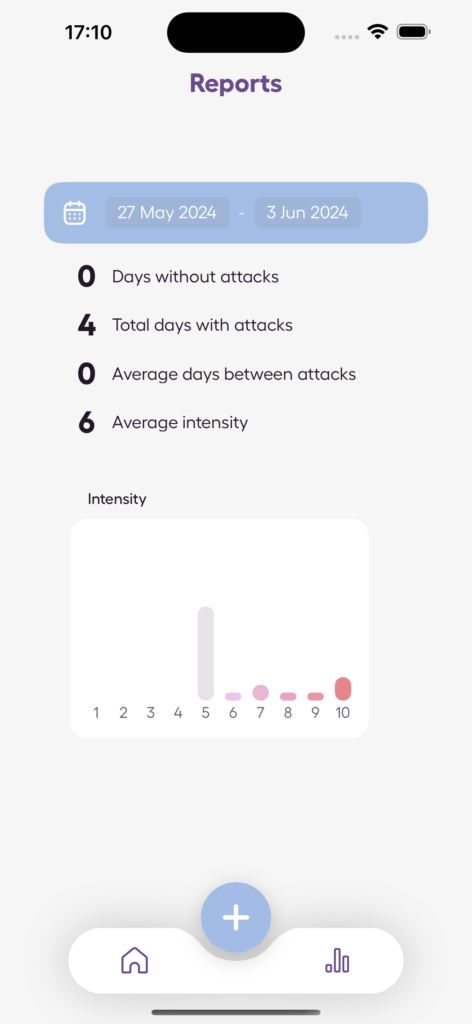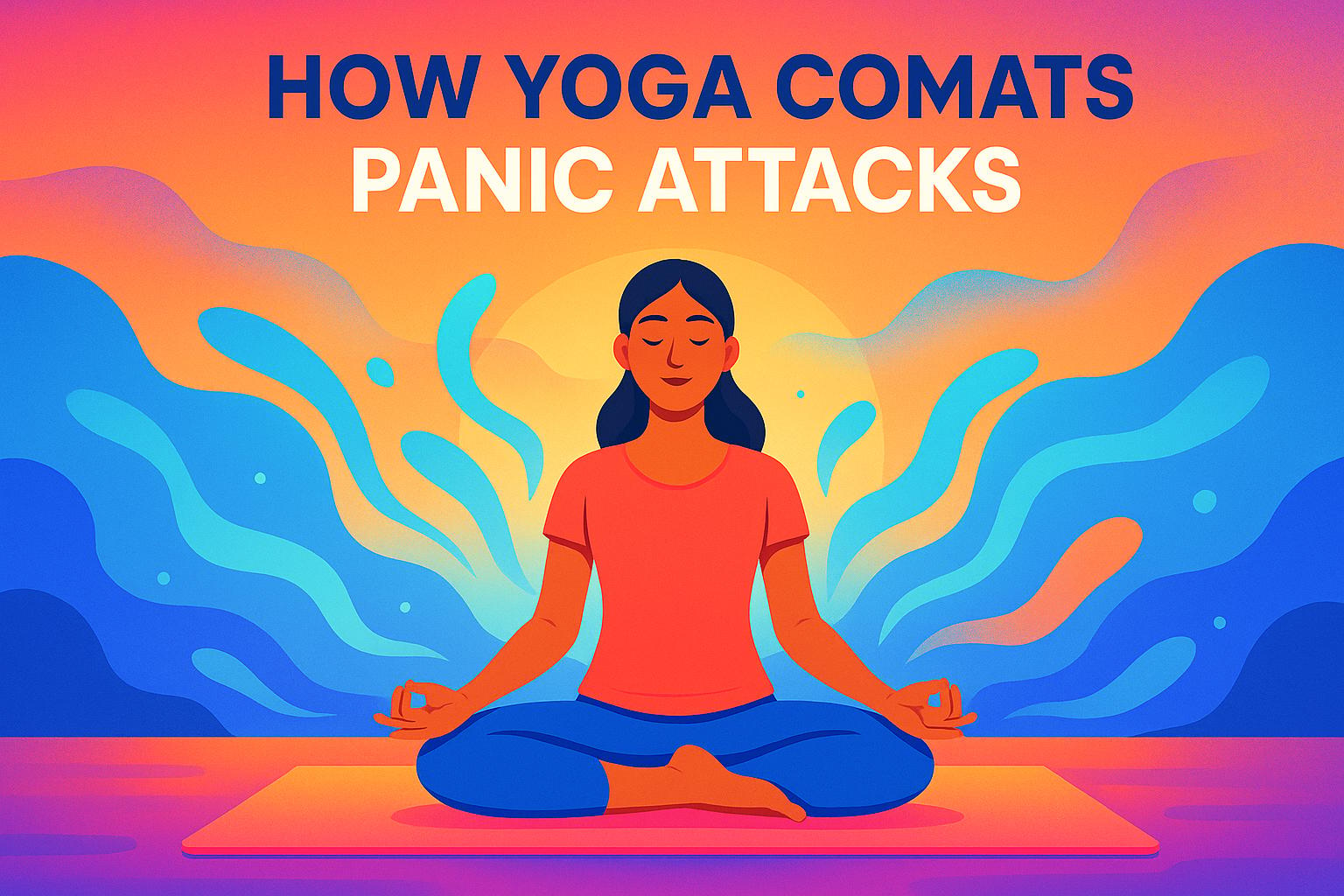Struggling with constant worry or anxiety? Mindfulness-Based Cognitive Behavioral Therapy (MBCT) can help you manage Generalized Anxiety Disorder (GAD). Combining mindfulness practices with traditional CBT, MBCT helps you stay present, reduce anxious thoughts, and build emotional resilience.
Here’s a quick summary of 5 effective MBCT techniques you can start today:
- Mindful Breathing: Use the 4-4-4-4 breathing method to calm your mind.
- Body Scan: Release physical tension by focusing on each part of your body.
- Recognizing Thoughts: Observe and label anxious thoughts without judgment.
- Daily Routine: Practice mindfulness with short, consistent sessions.
- Track Progress: Use tools like the GAD-7 questionnaire or apps like Anxiety Journal to monitor symptoms and triggers.
Start small – just 5 minutes of mindful breathing can make a difference. For extra support, try the Anxiety Journal app to track your progress and get personalized insights. Ready to take control of your anxiety? Let’s dive in.
What is Mindfulness-Based Cognitive Therapy (MBCT)?
What is Mindfulness-Based CBT?
Mindfulness-Based Cognitive Behavioral Therapy (MBCT) blends cognitive behavioral techniques with mindfulness practices to help people better handle anxiety. It focuses on cultivating a non-judgmental awareness of thoughts and emotions.
Core Elements of MBCT
MBCT combines strategies from cognitive behavioral therapy with mindfulness meditation to address anxious thought patterns and encourage awareness of the present moment.
One essential tool in MBCT is the 4-4-4-4 breathing exercise, which brings focus to the present. Here’s how it works:
- Inhale for 4 seconds
- Hold your breath for 4 seconds
- Exhale for 4 seconds
- Pause for 4 seconds
This method provides a simple, structured way to center your attention.
Mindfulness in CBT Practice
Mindfulness adds a hands-on aspect to traditional CBT. Instead of simply identifying anxious thoughts, you learn to observe them with curiosity and detachment. This shift helps disrupt the cycle of anxiety by:
- Bringing attention to physical sensations and thought patterns
- Reducing emotional reactions to anxiety triggers
- Strengthening emotional balance through consistent practice
Guided breathing techniques are a core part of this approach, offering a quick way to manage anxiety during stressful moments. Studies confirm that these methods can help restore emotional stability, especially during intense episodes of anxiety.
Research on MBCT for GAD
Studies have shown that MBCT is effective in managing Generalized Anxiety Disorder (GAD). Regular mindfulness practice has been linked to noticeable reductions in anxiety symptoms and improved emotional control.
Tracking your practice over time can also enhance the effectiveness of MBCT. It keeps you accountable and provides insights into your progress, making it a powerful tool for managing anxiety in the long term.
3 Key MBCT Techniques for GAD
Here are three practical techniques from MBCT (Mindfulness-Based Cognitive Therapy) that can help with managing Generalized Anxiety Disorder (GAD). These methods focus on turning mindfulness principles into daily habits for reducing anxiety.
Mindful Breathing
Find a quiet spot and sit comfortably. Set a timer for 5–10 minutes. Place one hand on your chest and the other on your abdomen. Use the 4-4-4-4 breathing pattern: inhale for 4 seconds, hold for 4 seconds, exhale for 4 seconds, and pause for 4 seconds before repeating. Aim to do this 2–3 times a day, paying attention to how your body feels as you breathe.
Body Scan
Lie down in a calm environment for about 15–20 minutes. Start by focusing on your toes and gradually shift your attention upward, moving through each part of your body. Notice any tension and try to release it with steady, deep breaths. This exercise helps you connect with your body and ease physical stress.
Recognizing and Accepting Thoughts
When anxious thoughts come up, acknowledge them without judgment. Label the type of thought (like "planning worry") and let it exist without reacting. Keep track of these thoughts in a journal or digital log to identify patterns in your anxiety. This practice helps you observe your thoughts instead of being overwhelmed by them.
Daily Practice Guide
Starting Your Practice
Set aside 10–15 minutes each day for mindfulness in a quiet spot at the same time. Here’s an example of how you can structure your day:
- Morning routine: Spend 5 minutes practicing mindful breathing.
- Midday check-in: Do a body scan during your lunch break (10 minutes).
- Evening reflection: Try a thought recognition exercise before bed (10 minutes).
As you get more comfortable, you can gradually extend the time, but staying consistent is key. Even with a routine, you might face a few bumps along the way.
Solving Common Challenges
Here’s how to handle some typical hurdles:
Time Management: If 15 minutes feels like too much, start small with 3-minute sessions. Use phone reminders or combine mindfulness with daily habits, like while sipping your morning coffee.
Mind Wandering: It’s normal for your thoughts to drift. When that happens, gently guide your focus back to your breath or body sensations. Each time you do this, you’re strengthening your awareness.
Physical Discomfort: If sitting still is tough, try these alternatives:
- Walking meditation,
- A body scan while lying down, or
- Standing meditation during everyday tasks.
Measuring Your Progress
Use tools like the Anxiety Journal app to track your growth. Its AI-powered features help you spot patterns in your anxiety and provide tailored suggestions.
"In March 2022, Anxiety Journal launched its AI-powered analysis feature to help users identify patterns and receive personalized recommendations. The project, led by Anxiety Journal’s CEO, resulted in a 30% increase in user engagement and a 20% decrease in reported anxiety levels among active users over 3 months." (Anxiety Journal, 2022)
Here’s what you can do with the app:
- Log daily anxiety levels and symptoms.
- Record triggers and what strategies worked for you.
- Take regular GAD-7 assessments to monitor changes.
- Review weekly progress reports.
- Track improvements in sleep and stress management.
These steps will help you stay on track and notice the benefits over time.
sbb-itb-b1dedcc
Support Tools
Anxiety Journal App Guide
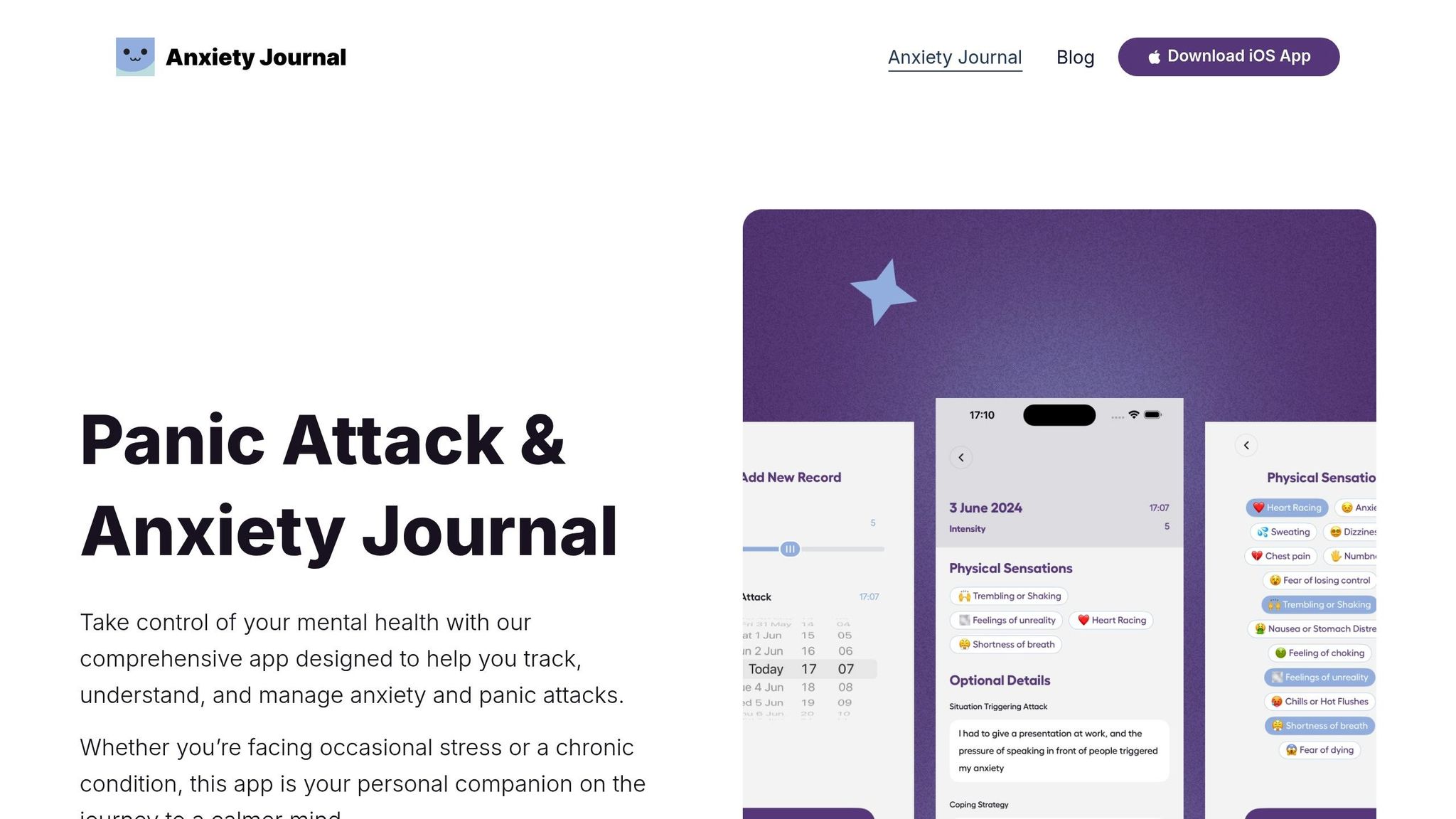
The Anxiety Journal app is packed with tools designed to help you stay consistent with your MBCT (Mindfulness-Based Cognitive Therapy) practice for Generalized Anxiety Disorder (GAD). With this app, you can easily track and manage your progress. Here’s what it lets you do:
- Log detailed accounts of anxiety episodes, including symptoms and triggers.
- Keep a record of coping strategies that work best for you.
- Monitor your stress levels throughout the day.
- Take GAD-7 assessments to track changes in your anxiety over time.
The app’s AI analyzes your entries to detect patterns, giving you a clearer understanding of which MBCT techniques are most effective for managing your anxiety.
Digital Support Features
Beyond tracking, the Anxiety Journal app offers digital tools to help you stay on track with your mindfulness practice. These features provide structure and accountability, making it easier to integrate MBCT into your daily life. Here’s how it supports your journey:
Real-time tracking: When anxiety hits, you can quickly log the experience and access guided exercises like box breathing or the 4-4-4-4 method to find relief.
Progress insights: The app generates detailed reports that show how your anxiety levels evolve over time. These reports allow you to:
- Pinpoint which MBCT techniques are the most effective for you.
- Monitor your progress in managing anxiety.
- Adjust your approach using data-driven feedback.
The app provides a secure and user-friendly space to document your journey. Its actionable insights and simple design make it easier to stick with your practice and see meaningful improvements in managing GAD.
Getting Professional Support
If anxiety is interfering with your work, relationships, or sleep, it may be time to reach out for professional help.
Use tools like the Anxiety Journal app to monitor your GAD-7 scores. If your scores stay consistently high, it’s a clear sign that a professional evaluation could be beneficial.
A mental health professional can provide a thorough assessment and create a treatment plan designed specifically for your needs. Taking this step shows you’re prioritizing your well-being and taking control of your mental health.
Conclusion
Mindfulness-Based Cognitive Therapy (MBCT) techniques like mindful breathing, body scans, thought acceptance, anxiety exposure, and self-compassion can help in managing Generalized Anxiety Disorder (GAD). These methods, discussed earlier, provide practical tools for daily use.
To see real progress, consistent practice is key. Consider using tools like the Anxiety Journal app. It helps track your GAD-7 scores, log symptoms, and identify triggers. With its AI-driven analysis, the app can uncover patterns and offer tailored suggestions to help you improve.
Start small – try 5-minute guided breathing exercises, such as the 4-4-4-4 technique, and gradually increase the duration. These practices, when done regularly, can make a meaningful difference in managing GAD.
FAQs
What is the 4-4-4-4 breathing technique, and how can it help reduce anxiety symptoms?
The 4-4-4-4 breathing technique, also known as box breathing, is a simple yet effective method for calming the mind and managing anxiety. It involves inhaling for 4 seconds, holding your breath for 4 seconds, exhaling for 4 seconds, and pausing for another 4 seconds before repeating the cycle.
This technique works by helping you focus on your breathing, which can shift your attention away from anxious thoughts. It also activates the body’s relaxation response, slowing your heart rate and reducing physical tension. Practicing this regularly can help you feel more grounded during moments of stress or anxiety.
What challenges do people often face when starting mindfulness for managing GAD, and how can they address them?
Starting a mindfulness practice for managing generalized anxiety disorder (GAD) can feel overwhelming at first, but understanding common challenges can help ease the process.
One common hurdle is difficulty staying focused during mindfulness exercises. Many people find their minds wandering, especially when they’re feeling anxious. To overcome this, start with short sessions – just 2-5 minutes – and gradually increase the duration as you get more comfortable. Remember, it’s normal for your mind to wander; gently bringing your focus back is part of the practice.
Another challenge is impatience or unrealistic expectations. Mindfulness takes time to show benefits, so try to approach it with curiosity rather than expecting immediate results. Consistency is key – practicing daily, even for a few minutes, can lead to meaningful improvements over time.
Finally, some people struggle with finding the right environment or time to practice. Choose a quiet, comfortable space where you won’t be interrupted, and consider incorporating mindfulness into your daily routine, like during a morning break or before bed. With patience and persistence, mindfulness can become a valuable tool for managing GAD.
How does the Anxiety Journal app support mindfulness-based CBT techniques for managing GAD?
The Anxiety Journal app complements mindfulness-based CBT techniques by offering practical tools to track and manage anxiety symptoms effectively. Users can log anxiety episodes, maintain a detailed record of panic attacks, and monitor stress levels over time. These features help individuals identify triggers and patterns, which are essential for CBT practices.
The app also includes helpful tools like guided breathing exercises and anxiety level assessments, empowering users to stay mindful and proactive in managing generalized anxiety disorder (GAD). By combining these features with mindfulness-based CBT techniques, users can gain deeper insights into their mental health and develop healthier coping strategies.


